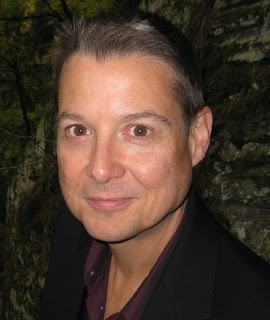By Jon McGoran
One of the oldest, best known, and perhaps most discredited
pieces of writing advice out there is “Write what you know.”
When I was younger, I took this to mean “write about your
own life,” and decided early on it was advice to be disregarded. I was sure no one wanted to read about my
life, and I’ve still never read a bestseller — or any kind of seller — with a
protagonist who spends every night writing while all the interesting characters
are out doing things. (“Our hero sat at the computer and typed. Then he typed
some more. After a slightly over-long break on Twitter, he resumed typing.”)
I decided it is more important to write who you know, or to
write what you know about people. So I created characters informed by the
people in my life as I wrote about things I didn’t know, things like forensics,
which required massive amounts of research. That kind of research is a lot of
work, but it’s immensely fun, a spark for creativity and a great source for
ideas.
I might not have been writing what I knew, but I knew what I
was writing. I got plenty of great feedback, including praise for the accuracy
and detail of the forensics. But I was also frequently asked if I had a
background in forensics, and met with unmistakable disappointment when I
replied, (betraying none of the
indignation that I felt), “No, my background is in writing.”
Meanwhile, during the
day, I continued to work as communications director for a food co-op in
Philadelphia, editing and publishing a monthly newspaper, The Shuttle, and, in
large part, writing about food and the systems that grow and produce it. My
daytime activities were almost as boring as my evenings (“The next day, our
hero sat at a different desk, on a different computer, and he typed. After sharing
a hilarious cat picture on Facebook, he typed some more. …Then he went to a
meeting.”) But the issues I was covering were fascinating and important,
increasingly so in recent years. Food was being irradiated, cloned, and
genetically engineered — bad news for people who eat food, but great news for a
writer looking for a meaningful topic to write about. Ideas for thrillers
jumped out at me every day.
As the news about GMOs, or genetically modified organisms,
got crazier and crazier, I decided I had to get involved. I began working with
groups like Just Label It and the Right to Know coalition, who were
spearheading national efforts to label GMOs, and more recently with statewide groups in Pennsylvania.
I also started working on Drift, a thriller about GMO’s and
the blurring line between food and pharmaceuticals, first because it was a
great idea for a thriller, but also because fiction can be a very compelling
way to explore important issues. I still had to do plenty of research (you
always have to do lots of research), but I already had a nuanced understanding
of the topic, and a certain level of credibility if someone was to ask about my
background in this area. I’ve already gotten great feedback, support and
enthusiasm from people in the GMO labeling community.
Drift doesn't come out until July, and I have no way of
knowing how it will be received. But having benefited from the subtle grasp
that comes with a deep understanding of a subject, the satisfaction of making a
meaningful contribution to the discourse of an important topic, and, hopefully,
the support of a broad community of people who share my concerns, if I had to
offer one piece of advice it just might be, Write what you know.
BIO: JON McGORAN has written about food and sustainability for twenty years, as communication director at Weavers Way Co-op and editor of The Shuttle newspaper, and now as editor at Grid
magazine. During that time he has also been an advocate for urban
agriculture, cooperative development and labeling of genetically
engineered foods.
He is a
member of the International Thriller Writers and the Mystery Writers of
America, and a founding member of the Philadelphia Liars Club, a group
of published authors dedicated to promotion, networking, and service
work. In Drift, he combines his interest in the increasingly bizarre world of food today with his love of the thriller. Visit him at: www.jonmcgoran.com
Drift
is an ecological thriller about genetically-engineered foods,
agro-pharmaceuticals and bio-tech threats to farming and food. After the
death of his parents, Philadelphia narcotics Detective Doyle Carrick
plans to spend a thirty-day suspension drinking alone in the country.
But then a high-powered drug gang shows up in town and when Doyle busts
their scheme to sell genetically altered heroin, he realizes they are up
to something far more sinister. Soon, he must race to stop them from
unleashing a deadly new plague that could kill millions, and earn
billions for those who control the cure.









